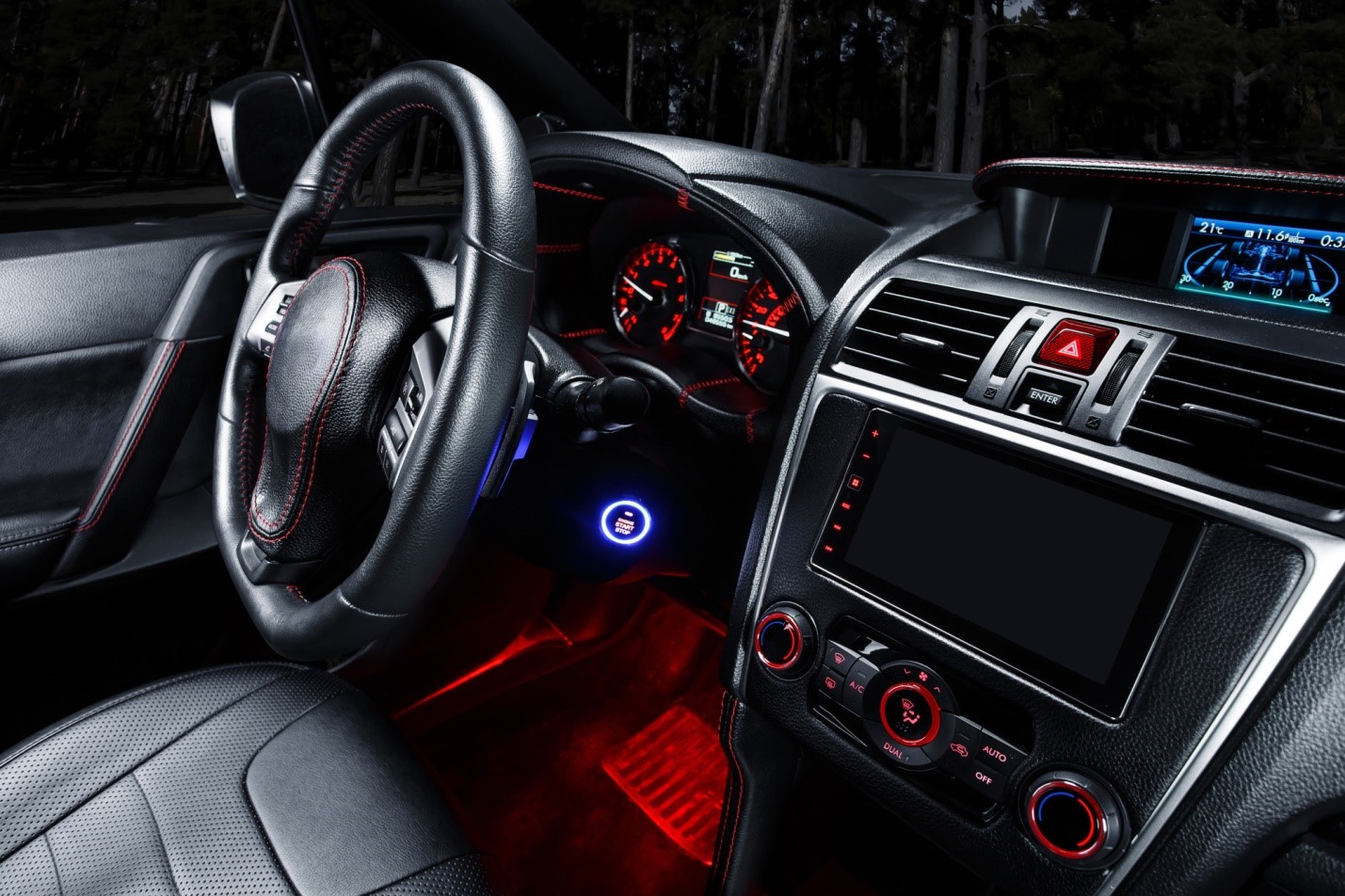[ad_1]
Imagine getting ready to leave your house and you open your door and the rain is pouring down. Now you start to frantically look for your umbrella…. ah, there it is! You step outside, open your umbrella, and you are now protected from that pouring rain. If it were a bright sunny day with no rain in sight you probably would not even care about where your umbrella is or if you even had one! The same is true about insurance. Until you need it, do you really care about it? Unfortunately, too many people realize that they have insufficient coverage only when an unexpected incident occurs and they have to place a claim with their insurance company.
So, a logical starting point to determine if you have proper insurance coverage is to understand the basics. To ensure that you do have the proper coverage, you first need to acquire a good understanding of the basics of auto, home, personal umbrella, and life insurance coverage. For this article, we will focus on auto insurance coverage.
Auto Insurance basically covers you for liability and property damage as it relates to your motor vehicle. There are other optional areas of coverage as well, but for our discussion let’s stay focused on the basics, which are the most important anyway. Your auto insurance policy’s first and/or second pages are the declaration pages of your auto insurance policy. The declarations pages describe your auto coverage limits in numeric dollar values.
Here is a sample of what you may see on your auto insurance policy’s declaration pages:
-Bodily Injury/Property (BIPD) 250/500/100
-Limited or Unlimited
-Medical (Med) $5,000
-Personal Injury Protection (PIP) 250 w/250 Ded
-Uninsured/Underinsured (UM/UIM) 250/500/100
-Collision $500 (Coll) Deductible
-Comprehensive (Comp) $500 Deductible
-Rental Insurance (RI) 80%/1500
Let’s take a look at each of these coverage definitions and amounts in more detail.
The BIPD represents Bodily Injury (BI) / Property Damage (PD). Basically, in the example above, this individual policyholder has liability protection for $250,000 per individual or $500,000 maximum per incident, plus $100,000 in property damage to the other party’s vehicle in a collision. Liability coverage is protection for times when you have been deemed and proven negligent in an auto accident and you therefore become legally liable for the resulting compensatory and/or punitive damages to the other party or parties. The BI, of the BIPD, will cover you for negligence on your part that resulted in bodily injury to the other party or parties. BI also covers the cost of attorney fees associated with any litigation brought against you by the other party. In the above example, this person has $250,000 in coverage for all inclusive liability and attorney fees per individual injured or $500,000 for the entire incident.
The PD, of the BIPD, covers the damage to the other party’s vehicle as a result of your negligence; thus, in the above example, up to $100,000 in property damage to the other party’s vehicle or property. Now, being cognizant of the litigious society that we live in, we ask if $250,000 per person or $500,000 per incident is enough BI coverage? This is a personal decision for every individual to make depending upon their current assets and net worth, and their knowledge of recent jury decisions and awards on BI cases. A major factor affecting this decision is an understanding that you are self-insured for any amounts awarded in excess of your BI coverage amount, should the jury award compensatory and punitive damages greater than your BI coverage amount. So, in this example, should the jury award $750,000 to the individual driving the other vehicle who suffered bodily injury because you collided with them as a result of your negligence, then you are self-insured for the amount in excess of $250,000 which in this case would be $500,000. If you do not have the $500,000 to settle the award, then the judge has many other options to ensure restitution to the injured party such as: garnishing your wages, selling off some of your assets, placing a lien on your property, etc. Now, you can get an umbrella policy to cover you up to a certain amount in excess of your underlying auto BI coverage. We will look at how an umbrella policy works in more detail in an upcoming article.
Next, we have “limited right to sue” versus “unlimited right to sue” coverage. Basically, under the “limited” right to sue lawsuit option, you agree not to sue the person who caused the auto accident for your pain and suffering unless you sustain one of the permanent injuries listed below:
-Loss of body part
-Significant disfigurement or scarring
-A displaced fracture
-Loss of a fetus
-Permanent injury
-Death
Please note that choosing this option does not waive your right to sue for economic damages such as medical expenses and lost wages.
Under the “Unlimited” right to sue lawsuit option, you retain the right to sue the person who caused an auto accident for pain and suffering for any injury. Most people will choose the “limited” option because it is far less costly and it provides the ability to sue the negligent party for most major and permanent injuries. However, many attorneys will usually choose the “unlimited option” for their own personal coverage and pay the significant extra cost because they want the right to sue for any injury.
PIP coverage stands for Personal Injury Protection coverage. PIP is paid from your own policy. PIP covers medical expenses, and possibly lost wages and other damages. PIP is sometimes referred to as “no-fault” coverage, because the statutes that enacted it are generally known as no-fault laws. PIP is designed to be paid without regard to “fault,” or more properly, without regard to legal liability. PIP is also called “no-fault” because, by definition, a claimant’s, or insured’s, insurance premium should not increase due to a PIP claim. A PIP claim may be subrogated by your insurance against the other party’s insurance company if the other party was determined to be the neglligent party in the accident. PIP is a mandatory coverage in some states.
Uninsured/Underinsured (UM/UIM) is coverage from your policy that may pay for injuries to you and your passengers, and possibly damage to your property, when as a result of an auto accident the other driver is both legally responsible for the accident and determined to be “uninsured” or “underinsured.”
An uninsured driver is a person who has no auto insurance coverage, or had insurance that did not meet state-mandated minimum liability requirements, or whose insurance company denied their claim or was not financially able to pay it. In most states, a hit-and-run driver is also considered an uninsured driver as it pertains to paying for injuries to you or your passengers.
An underinsured driver is a person who had insurance that met minimum legal requirements, but did not have high enough coverage limits to pay for the damage caused by the accident. In these situations, UIM coverage can pay you for your damages. It is important to note that uninsured and underinsured is separate coverage, although in many states they can or must be purchased together. Some states mandate purchase of UM/UIM, but many do not.
Collision coverage insures you for damage to your vehicle. No matter if it is a collision between your car and another car, or your car and a stone wall. You are covered if your car sustains damage as a result of colliding into something or something colliding into it, whether you are at fault or not. Your deductible will usually apply. If you collide with another vehicle and the other party is at fault, then your insurance company may subrogate the claim against the at fault party’s insurance company to recover the claim amount.
Comprehensive (Comp) basically covers what collision coverage does not. When your car sustains damage that did not result from colliding with another motor vehicle or object, the comprehensive portion of your policy will pay for the damages. If you do not have comprehensive coverage then you would have to pay out of your own pocket for any damage to your vehicle not related to a collision. Here are the perils typically covered by comprehensive auto insurance coverage: fire, theft, vandalism, broken or damaged glass, animal inflicted damage, falling objects, storms (hail, wind, etc.), and water damage. Your deductible will usually apply.
Rental Insurance (RI) is coverage for you to rent a car while your vehicle is being repaired because of a covered incident. In the above example of declaration page values, the 80%/1500 means that you have coverage for $80 per day and $1,500 maximum total cost to rent a car while your vehicle is being repaired. This is an optional coverage that many people take, but some do not.
Well, that is it! That is the basics of understanding your auto insurance coverage. Not so bad, right? Now that you understand the basics of auto insurance coverage you can review and analyze your personal auto insurance policy’s declaration page coverage information while taking into consideration your personal financials to determine whether or not you have sufficient coverage.
Stay tuned for future articles that will explain the basics of understanding homeowner’s, personal umbrella, and life insurance coverage. You never know when it is going to rain!
Joseph Rubino, Agent
NJ Licensed Property & Casualty, Health, and Life
[ad_2]











